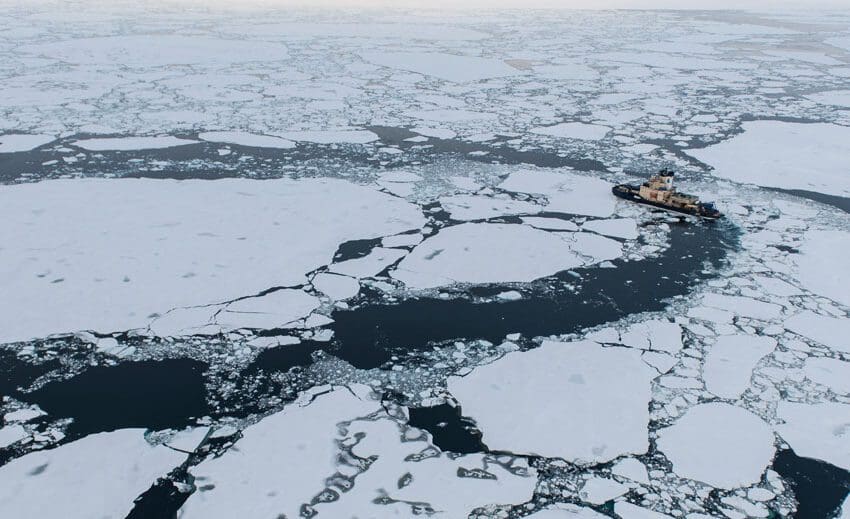GoNorth is a “go”

ODEN in the Greenland sea during the Samcot Cruise OATRC, September 2012. Photo: Øyvind Hagen/NTNU.
The GoNorth project wil focus on the marine areas north of Svalbard. Photo: Øyvind Hagen/NTNU.
The GoNorth project, where UNIS is one of the partners, has received NOK 3 million from the Norwegian government to acquire more knowledge about the marine areas north of Svalbard.
3 March 2020
UNIS press release
The GoNorth consortium has proposed a wide-ranging and cross-disciplinary program to acquire new and essential knowledge about the oceanic areas, from the sea floor and subsea geology, through the water column, to the surface sea ice. Education will be an important part of the program.
The 3-year project is led by Sintef, and 13 universities and research institutes participate, including the University Centre in Svalbard (UNIS). Geology professor Snorre Olaussen at UNIS is part of the work package 1 (WP1): Continental rifting and breakup processes. In time, UNIS will get involved in the other WPs also.
– One of the things this project will focus on is how the sea floor spreading develops north of Svalbard. We know that this mid ocean ridge; the Gakkel Ridge between the Nansen and Amundsen basins, has the slowest drift on the planet, but we do not why, Olaussen explains.
The GoNorth initiative was born in 2010, following the decision by the United Nations’ Shelf Commission, to support the Norwegian claim for an extended continental shelf north of Svalbard, into the Nansen Basin. A gathering of geologists at the University Centre in Svalbard, UNIS, were at the time discussing the extension of the shelf and agreed that the knowledge base was limited. Exploring the Arctic Ocean had not been given priority in Norway in recent years.
International collaboration
GoNorth adopts a stepwise approach, starting in the coastal areas north of Svalbard, before gradually moving northward. Ice breakers will be necessary in the northernmost areas. Collaborative cruises with international partners are vital.
There are a number of international environments that share interest in the Arctic Ocean and collaborate on research, vessels and funding. GoNorth plans three research missions, two with Germany and Sweden.
The Norwegian government now wants the country to be a leader in knowledge of the Arctic Ocean and GoNorth receives support from the Norwegian Ministry of Trade and Industry, the Ministry of Education and Research and the Ministry of Foreign Affairs for the work to organize, finance and launch the research project.
This will help to make Norway one of the foremost managers of the environment and natural resources in the High North, according to a governmental press release in late February.
The project will contribute to the development of a Norwegian knowledge base in this area, and will focus mainly on research. Relevant topics may include environmental monitoring and environmental technology, sensors, autonomous vehicles, materials adapted to the Arctic, communications and navigation technology, and understanding of ice forces and ice mechanics.
Read more about GoNorth (project webpage)